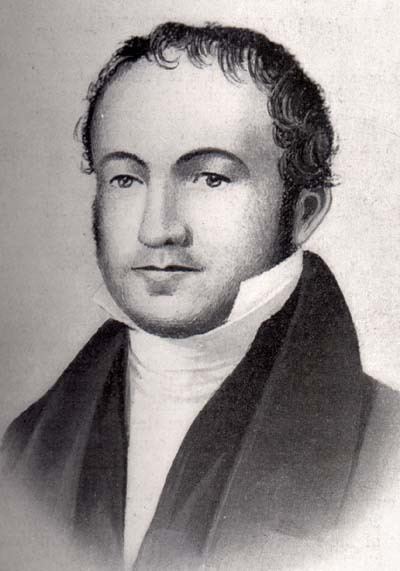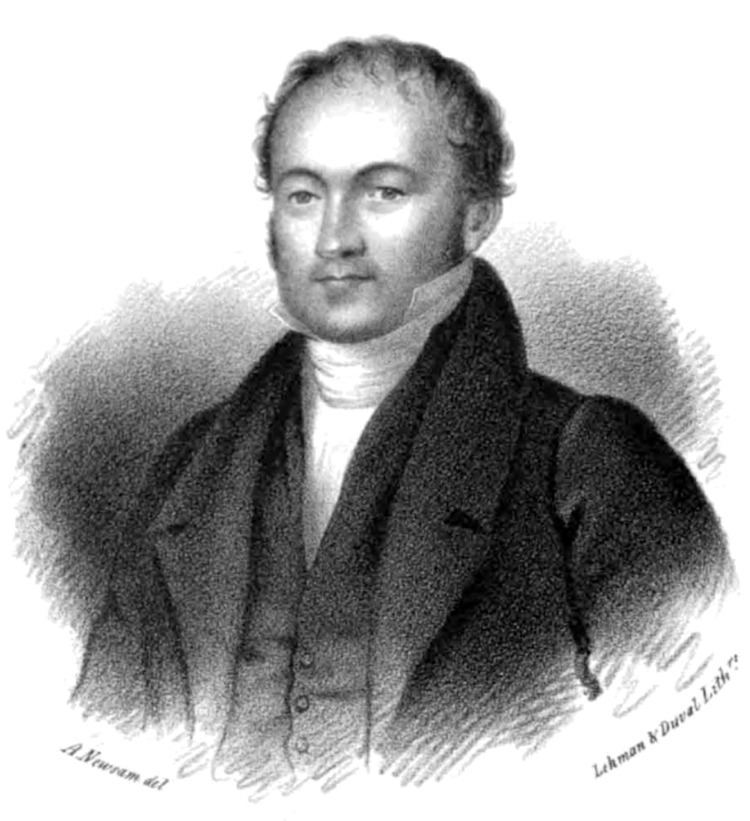Name Lewis de Role Botanist | ||
 | ||
Books Synopsis Fungorum in America Boreali Media Degentium | ||
Lewis David de Schweinitz (13 February 1780 – 8 February 1834) was a German-American botanist and mycologist. He is considered by some the "Father of North American Mycology", but also made significant contributions to botany.
Contents
- Education
- Early career
- Return to the United States
- Honors and later career
- Selected publications
- References

Education
Born in Bethlehem, PA, a great-grandson of Count Nicolas Ludwig von Zinzendorf, founder and patron of the Moravian Church,in 1787 Schweinitz was placed in the institution of the Moravian community at Nazareth, Pennsylvania, where he remained for 11 years and was a successful and industrious student. Schweinitz later entered the Theological seminary at Niesky (Prussia) in 1798. In 1805, he published the Conspectus Fungorum in Lusatiae in collaboration with his teacher, Professor J.B. Albertini.
Early career
In 1807 he went to Gnadenberg (in Silesia), then subsequently to Gnadau to work as a preacher in the Moravian church. A work appointment in the United States led him on a route through Denmark and Sweden, to avoid Napoleon's operations. This path allowed him to meet with some of the academics at the University of Kiel in Holstein, where he was bestowed with an honorary Ph.D. "in absentia, for his work as an administrator, his cultivation of natural science, and the Conspectus".
Return to the United States
After returning to the United States in 1812, he settled in Salem, North Carolina (now called Old Salem), North Carolina, working as an administrator of church estates. (He lived in what had been built as the Dr. Samuel Benjamin Vierling House which is now an exhibit building open for public tours.) The results of his mycological research in this location would later be published as Synopsis Fungorum Carolinæ Superioris in 1822. This work was edited by Christian Friedrich Schwaegrichen who, by a printer's error, was misnamed on the title page. The identity of the editor has been a source of confusion ever since. Schweinitz was elected to membership in the American Philosophical Society in 1817. The Synopsis was published without Schweinitz's knowledge: in 1818, he had simply given a list of North Carolina fungi to a friend in Leipzig. When he unexpectedly received prints of the published work four years later, he was "surprised but pleased". The Synopsis listed 1,373 species of fungi, and named and described 320 novel species. These new discoveries included such now widely known species as Lactarius indigo and Cantharellus cinnabarinus.
Honors and later career
He was a member of various learned societies in the United States, Germany, and France. A new genus of plant was named Schweinitzia (now referred to as Monotropsis) in his honor, and the polypore Phaeolus schweinitzii is named in his honor. While a resident of Salem he was elected president of the University of North Carolina, which honor he declined because it involved relinquishing work in the Moravian church. In 1821 he returned to his native village in Pennsylvania and continued his studies until his death. He described Dibotryon morbosum (Schwein.) Theiss. & Syd., 1915, as well as Cantherellus (now Gomphus) floccosus in 1832.
His herbarium, which comprised at the time of his death the largest private collection of plants in the United States, he bequeathed to the Academy of Natural Sciences at Philadelphia. His birthplace, the Gemeinhaus-Lewis David de Schweinitz Residence, is a National Historic Landmark in Bethlehem, Pennsylvania.
Selected publications
Schweinitz' three works on American fungi contain a total of 4,491 species; of these, 1,533 were described as new and 10 new genera were established.
